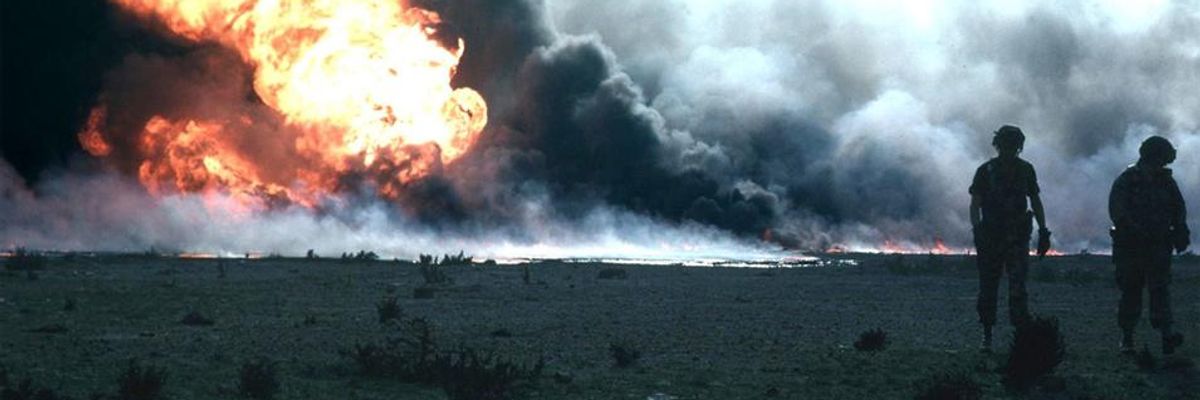The Pentagon claims that American forces and Iraqis are not at risk from contact with depleted uranium, which is used in armor-piercing munitions and protective tank plating.
That's baloney to some scientists who insist the widespread use of depleted uranium during the American-led invasion and occupation of Iraq poses a grave danger.
Despite attempts to reassure the public, the Pentagon remains on the defensive.
Depleted uranium, or DU, is a radioactive by-product from the industrial process used to enrich uranium. It is the leftover uranium-238 that results when scientists seek to transform naturally occurring uranium into uranium-235, which is used to produce nuclear energy.
The Army values munitions manufactured from depleted uranium because, when fused with metal alloys, they are considered the most effective warhead for penetrating enemy tanks. Also, because depleted uranium is twice as dense as lead, the Army uses DU as armor plating.
Once a depleted-uranium round strikes its target, the projectile begins to burn on impact, creating tiny particles of radioactive U-238. Winds can transport this radioactive dust many miles, potentially contaminating the air that innocent humans breathe.
This inhalation may cause lung cancer, kidney damage, cancers of bones and skin, as well as birth defects and chemical poisoning.
The 1991 Persian Gulf War was the first conflict to see the widespread use of depleted uranium, both in armor-piercing projectiles and in the protective armor of the new generation of Abrams tanks.
Studies by the Pentagon and the National Academy of Sciences established no linkage between DU and the "Gulf War Syndrome" ailments after the first Gulf War.
Some 70 people are still under study for the effects of contact with DU, with particular emphasis on what happens when people breathe the air where DU projectiles have vaporized.
Dr. Helen Caldicott has dedicated her life to warning about the hazards of nuclear war and the effects of DU.
Born in Melbourne, Australia, she first became interested in nuclear hazards when she saw the movie "On the Beach" at the age of 15. The film deals with a nuclear accident that leads to a global nuclear war.
Growing up, she led a movement in Australia against the French atmospheric nuclear tests in the Pacific and tried to win a ban on Australian uranium mining.
She became a medical doctor and later founded Physicians for Social Responsibility, which won the Nobel Peace Prize in 1985. She also has been a nominee for the same prize. She is a strong, vocal antiwar activist.
In her book, "The New Nuclear Danger: George W. Bush's Military-Industrial Complex," Caldicott claims that DU qualifies as a nuclear weapon because of its low-level radioactivity. She said that huge quantities of DU were created during the Cold War when the United States made thousands of nuclear weapons.
"Weapon researchers and developers have now succeeded in putting this toxic 'nuclear waste' to use through the creation of depleted uranium bullets and shells," she added. The weapons can cause enormous damage in Iraq, she said. Depleted uranium particles are soluble in water and the waters around the battlefields, as in Iraq and Kuwait, are at risk of radioactive pollution, Caldicott said.
She warned that DU maintains radioactivity for billions of years and can concentrate in the food chain, with children and babies more vulnerable to the carcinogenic effects of ingested radiation than adults.
Medical reports from Iraq indicate that childhood malignancies are seven times more frequent than they were before the first Gulf War.
The complaints of the veterans of the first Gulf War are "surprisingly similar in pattern to the various pathologies induced by uranium exposure as described by the U.S. military," Caldicott said.
Some 50,000 to 80,000 veterans were afflicted with Gulf War Syndrome during that war, and there has been no definitive answer -- but a lot of dispute -- as to the cause.
The military use of depleted uranium is still being questioned. But one thing is certain: War is dangerous to your health.

